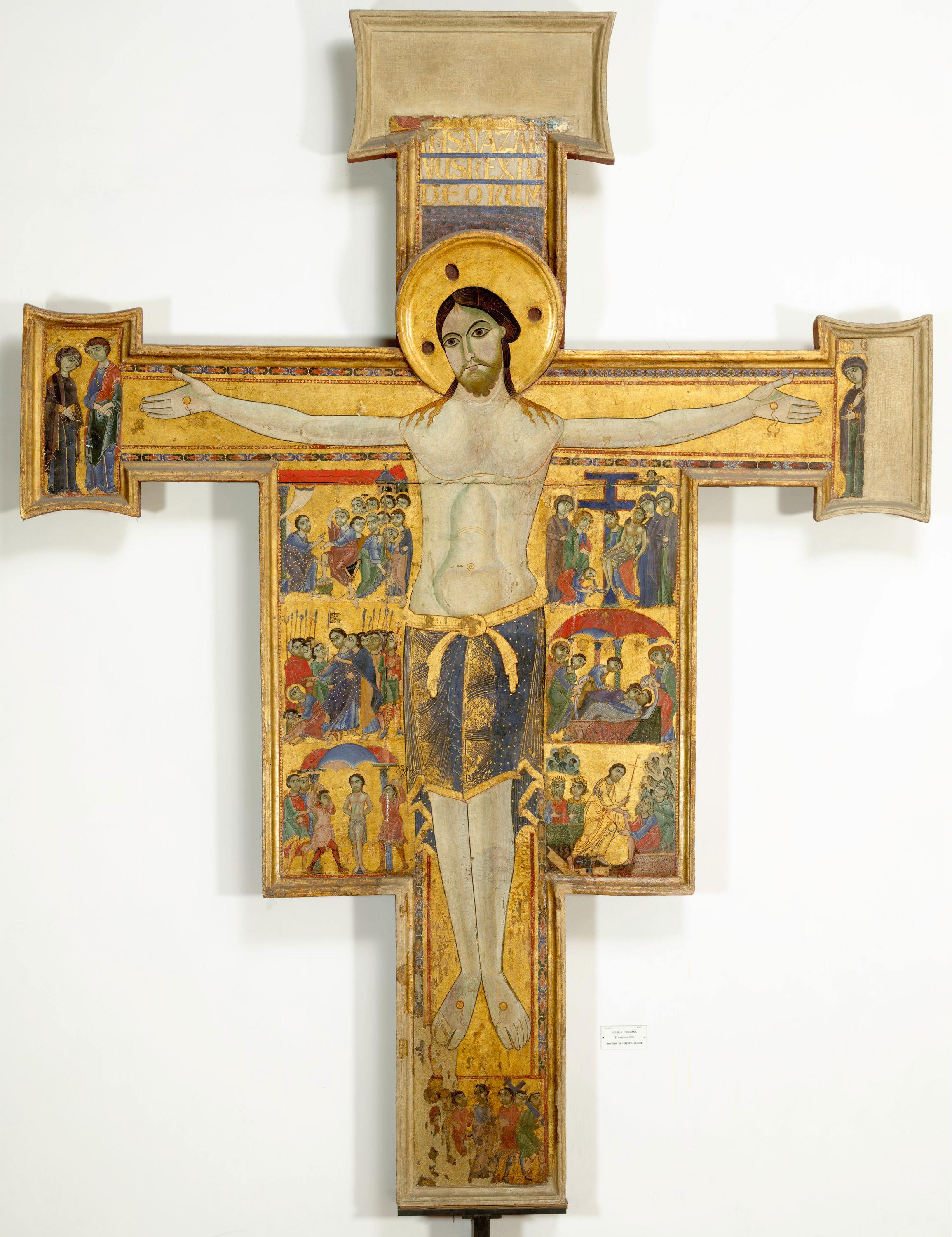Painted cross
Pisan painter
cymatium: IHS NAZARE/NUS REX IU/DEORUM
Christ crucified is depicted triumphant over death, with eyes open and head raised, following an icon style predominant in Italian painting until the early 13th century. Sharing in the drama of the Crucifixion, however, are the mourning Virgin and St. John the Evangelist, depicted on the left panel, and the pious women, on the right, of whom only one figure remains.
Several Gospel stories are illustrated on either side of the Crucifix: on the left, scenes from the Passion, and on the right, the events following the death of Christ. The narrative goes from top to bottom and from left to right. Illustrated in great detail are the washing of the disciples' feet before the Last Supper, the capture of Christ betrayed by Judas, the flagellation, and, below, Christ crucified, and the way to Calvary. On the left, from the top, the descent from the cross, the entombment of Christ and the descent into limbo of Christ resurrected are depicted.
A masterpiece of medieval painting, Cross no. 432 - known by its inventory number - has unique stylistic features that still make both the cultural context of its origin and the work's dating highly uncertain. Certain similarities noted between some Pisan culture painted crosses suggest that this piece may also have been executed by a master active in the mid-12th century in Pisa, a city that, in the Middle Ages, was a mercantile power overlooking the Mediterranean as well as a cultural epicentre of primary importance.
The origin of the Cross is unknown; it has been in the Uffizi since before 1881.
